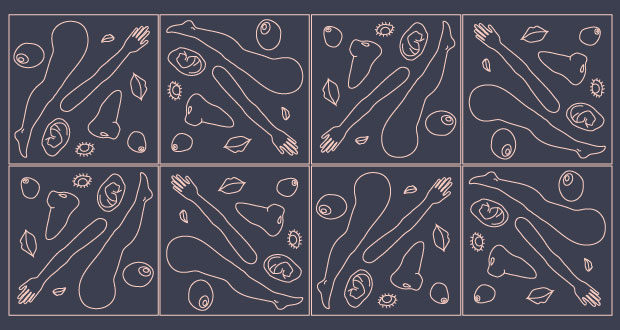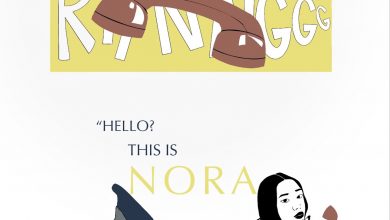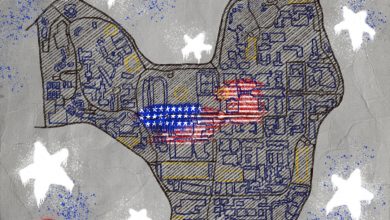On Sexist Dress Codes
I started high school as a wide-eyed, albeit awkward teenager. I was still processing the changes my body was making, conscious of what body types were seen as most ideal, and constantly assessing my body, aware that I was nowhere near what was considered “ideal.”
I was eager to make friends, excited to get involved in the vast amount of extracurricular activities available, and ready to kick butt in all my classes.
When I received my packet of documents to fill out with my parents during orientation, I signed on the dotted line promising I would be in line with all the rules and regulations surrounding our school’s dress code. I didn’t bother to read each rule or even question them for that matter. I never had an issue with dress codes before, and in my mind, only “slutty” girls were capable of violating the dress code. I viewed my fashion choices as modest, and I was strangely proud of that. Years later, I see how this line of thinking was so toxic.
You see, in my mind, there was a clear division between the girls who obeyed the dress code versus those who broke it. It was a split between the “good” girls and the “bad” girls, the angels and the sluts, the girls with solid morals and those with loose ones. When I would see a girl wearing short shorts get sent to the dean’s office, in my mind, I would think, “Well, serves her right. She shouldn’t be dressed like that anyway!”
It wasn’t until I had a very uncomfortable experience when I was stopped by a school official during the end of lunch in the middle of the quad. The school official asked to see my school ID and called the dean’s office, telling them to expect me in the office soon. I asked why I was being sent there, and he stared straight at my chest, smirked, and said, “You should know why.”
I’d like to mention that this school official was a middle-aged man, old enough to be my father. And I’d also like to mention that yeah, I was a little bustier than most girls were at my age, not that I could help that. I was actually incredibly insecure about that in high school, and it took me several years to embrace that part of me. I was pretty naive and unsure about what he was alluding to because it didn’t cross my mind that I would ever enter the “bad girls” club of dress code violators.
Suddenly, I felt this rush of shame overcome me. Not only was I insecure about my body already, now I had this extra stress of worrying about whether or not I dressed modestly. I wanted the official to explicitly state what was wrong with my outfit because I truly didn’t feel I was out of line at all.
He responded that I was bearing too much cleavage to which I questioned, “How much is considered too much?” He made up an arbitrary measurement and stated that anything over half an inch of cleavage was excessive. I’m naturally a defensive person, and I stood my ground, insisting that my cleavage was by no means excessive and that that was how my body happened to fit into my clothes. He laughed, said that I need to go buy new clothes, and promptly sent me to the dean’s office, though the bell rang and people began shuffling to go to class.
When I arrived at the dean’s office, I was met by yet another middle-aged male school official old enough to be my father. The school official that stopped me during lunch had to awkwardly tell the dean what I was being dress-coded for in an office full of other students and school officials. To say that I was humiliated or ashamed is an understatement.
I was reprimanded and assigned detention. Additionally, I was forced to change into my gym clothes so that my cleavage would be concealed.
I insisted that I had to report to class immediately and could not afford to miss it since we had a test that day. The school officials would not let me leave until I changed into my gym clothes. When I asked why I needed to change and why I couldn’t just be let off with a warning, he responded that I would be a distraction if I entered class in the state I was in.
Years later, I look back at this incident with much frustration for so many reasons:
1. My body was hypersexualized and objectified.
Yes, my 14 year old body was leered at and assessed by middle aged men over twice my age. My breasts were stared at long enough to measure how much cleavage was showing. I was conditioned to believe I was dressing sexually and suggestively, though those thoughts never crossed my mind while I got dressed for school in the mornings. Certain meaning was attached to my body parts, and I had no control over it, meaning my agency was stripped away. My body was turned into a sexual object whether I liked it or not, and I was dehumanized in the process.
2. My body was policed.
If you want to strip away a young girl’s agency over her own body even more, police how she should present it. When I’m punished and publicly shamed in front of all my peers for showing less than an inch of cleavage, I’m being told that my body isn’t mine to control. I’m being taught that I dress for others rather than myself. I’m forced to be aware of how my clothing choices affect others around me, and I’m robbed of my agency. It’s disempowering to be told how you can and cannot dress.
3. My self-esteem was torn down.
At an age when insecurity is at an all time high and self-esteem at an all time low, the last thing I need is for somebody to tear me down even more and make me feel even lower for my clothing choices. Being told your clothing choices are wrong makes girls feel even worse about their bodies. Instead of embracing my natural bustiness, I was made to feel ashamed of it. Because though my best friend had the same shirt that I did and didn’t get dress coded for it since her breasts are shaped differently than mine, I sat in the dean’s office wondering why my body has to look the way it looks. I remember wishing I had a different, less curvy and less busty body type, perpetuating Eurocentric beauty ideals over other ones. I was hypersensitive to how my body looked and was conditioned to believe I had to shop for clothes so that I properly conceal parts of my body others deemed inappropriate. I became ashamed of my body even more.
4. My dress code taught me and my peers how to slut shame.
As teens, our sexualities are budding, and sex is taboo. It’s this strange paradox where it’s obvious we know our peers are having sex, but you’re suddenly a slut if you do: the good old virgin-whore dichotomy where you fall into either the virgin realm or the whore realm (both polar opposites) and there is no in between. Students viewed the girls who didn’t get dress coded as the good girls. Girls who were dress coded were seen as sexually deviant and thereby labelled as sluts, both objectifying them and hypersexualizing them. When human beings are objectified, it’s easier to dehumanize them and therefore easier for dehumanizing acts to be perpetrated against them (i.e. catcalling, slut shaming, sexual assault, etc.)
5. Dress codes perpetuate rape culture.
Dress codes essentially victim blame. They tell girls that it’s their duty to dress a certain way, and if they don’t, they deserve the shame that comes with being stopped in front of a quad of thousands of students. That they deserve the shame that comes with walking around all day in gym clothes because everybody knows to associate the people in gym clothes with dress code violators, and people know to associate dress code violators with being sexually deviant “sluts”. They tell boys that it’s okay to sexualize their peers’ bodies and that their reactions to women’s body parts are a natural part of expressing their masculinity. Women bear the burden and responsibility of covering up in hopes their male peers are not tempted. In reality, the school administration should focus on teaching men they shouldn’t be sexually objectifying. This parallels the idea that women shouldn’t wear suggestive clothing if they don’t want to be raped or catcalled instead of teaching men it’s wrong to rape and catcall.
6. Dress codes police girls’ bodies more so than boys’.
Let’s be real, it’s rare that we ever see a boy in the dean’s office getting dress coded. Whereas boys’ dress code policies are geared towards preventing them from wearing clothes that promote violence, drugs, etc. girls’ dress code policies are heavily geared towards making sure girls cover up. Girls are told that they cannot bare shoulders, collarbones, cleavage, too much of their legs, or midriff. While girls’ dress code policies are geared towards preventing them from “distracting” their male peers, boys’ dress codes policies are not created with the hopes of making sure their clothing choices don’t “distract” their female peers. You see, at my high school, girls couldn’t wear spaghetti straps, and their tanks had to be a certain amount of inches thick. Bra straps couldn’t be seen (because God forbid the world knows we wear bras! :o). Yet, boys were allowed to wear muscle tanks. The message that is implicitly sent is that girls’ arms and shoulders are sexual and alluring whereas boys’ arms and shoulders are simply shoulders. Girls are seen as sexual objects, and boys are seen as human beings with natural human body parts.
7. Dress codes are heteronormative.
When you look at almost any school’s dress code policies, I can guarantee you that the policies are split between a column for girls and a column for boys. This reinforces the gender binary and throws out any possibility for a student who doesn’t align with an expected gender to be able to dress how they want. According to the dress code which only presented two gender options, girls and boys were expected to have their hair a certain length, jewelry policies differed based on gender, girls’ skirts had to be of a certain length but boys were not allowed to wear skirts. The dress code policies thereby defined what it meant to be feminine or masculine and offered no option for those who didn’t entirely fall in one or the other. These dress codes essentially monitored a student’s means of expressing their own identity, suppressing some by implying that their identities were wrong if they didn’t fall into the mainstream categories.
8. I was taught I was a distraction.
My biggest problem was that I was explicitly told my cleavage would be a distraction if I didn’t change. A distraction to whom? My male peers. I was forced to be subjected to the male gaze, regardless of whether I wanted to or not. I was unfairly burdened with the responsibility of making sure OTHER people didn’t think certain thoughts instead of just telling those people that they shouldn’t think those thoughts. I was made to feel I had a duty of safeguarding my male peer’s educational experience, implicitly prioritizing their education over mine. Because I sat in the office for so long, I was forced to take my test in half the time that everybody else did. My grade on that exam suffered, and that’s an experience that hardly any of my male peers ever had to experience simply by privilege of being born male. If ¾ inches worth of cleavage is enough to “distract” a boy from being able to focus completely in class, THAT’S a problem worth addressing. If all he can focus on is how turned on he is by that itty bitty line between two sacks of fat on my chest, we have some bigger fish to fry. In other words, we should be teaching boys to not sexualize natural female body parts and see their female peers as more than just a collection of body parts.
9. I wish I knew back then what I know now.
It’s feminism that has helped me properly articulate what it is that I have been feeling for so long. I was always aware that gender inequalities existed. I just never knew to which extent and what the repercussions of these inequalities were. I wish I knew how to stand up to my school’s administration. More than anything, I wish the multitudes of female faculty members and teachers (as well as males) who knew just how sexist these policies were could have stood up to administration and done something rather than reinforce oppressive sexist structures. After all, they had a voice in dress code policy formation and could have properly advocated for me. Silence is complacency, and several of my teachers, those who I revered and held to such high standards, failed me and women in general in this regard. I wish my parents could have stood up for me, but of course, education and awareness is a privilege that my parents were not afforded in the course of their upbringing.
Now, that I know what I know, should I ever have a daughter one day, I will do everything in my power to empower her, to make sure nobody robs her of her agency, and to stand up and let my voice be heard in the instance of injustice. Dress codes may seem so trivial, but it’s one of the many ways we are socialized since childhood to buy into a heteropatriarchal structure that seeks to disempower and marginalize certain groups. A structure that I refuse to be a part of and will live every day of my life actively working to deconstruct.





